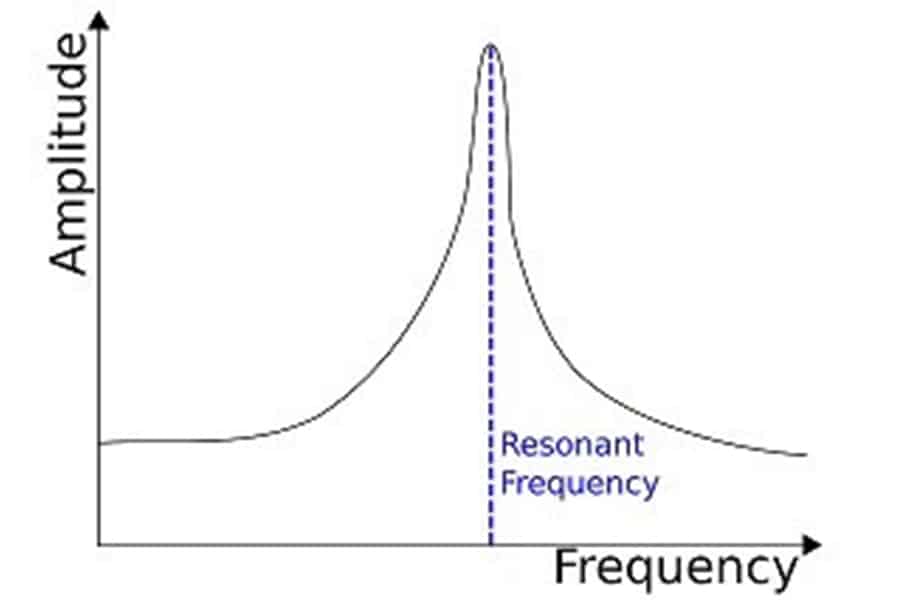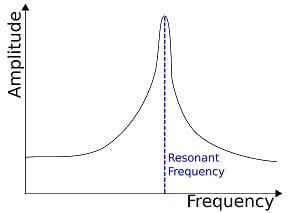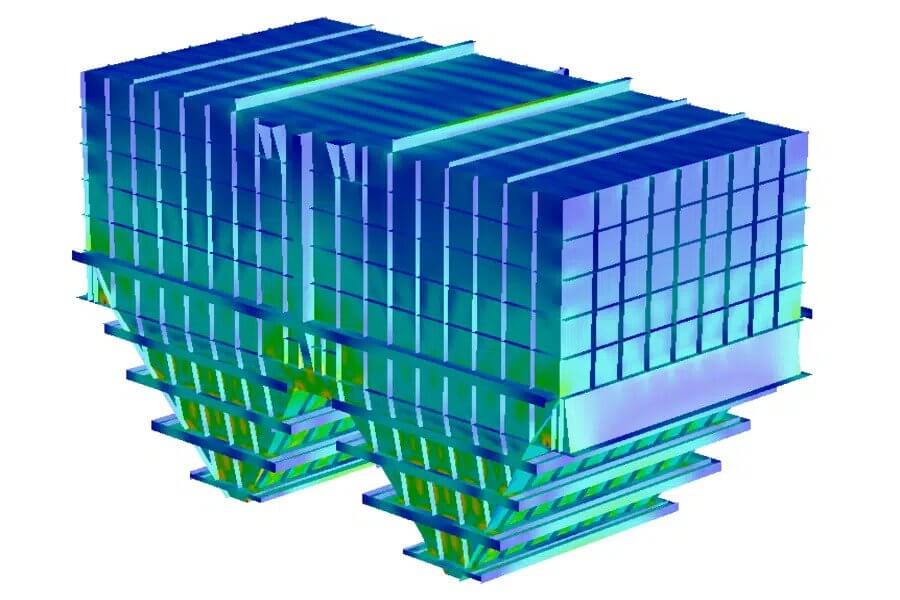The video below shows a rather severe response from the handrail guarding this vibrating screen. Handrails, stairways, lighting fixtures – these things often react violently near screens, feeders, crushers. But so too can the main and secondary structural members, so how do we know all is good, and how long does “good” last?
Resonance In Action
Understanding structural vibrations is easier if taken to the extreme. Here, we have what is known as Resonance.
So what is resonance? That’s when the forced vibration frequency matches the natural frequency of a system.
Nearly all objects, when hit or struck or somehow disturbed, will vibrate. If you drop a pencil on the floor, it will begin to vibrate, pluck a guitar string, it will begin to vibrate. Blow over the top of a beer bottle, the air inside will vibrate.
When each of these objects vibrates, they tend to vibrate at a particular frequency (cycles per second). The frequency at which an object tends to vibrate is known as the natural frequency of the object.
If you apply a known frequency to an object, and the object responds violently, then resonance is reached and the displacement, or amplitude, of the object, increases significantly.
In the video, the natural frequency of the handrail is pretty close to the forcing frequency of the machine. It’s pretty much resonating.
How to Avoid Resonance
The natural frequency of a system is dependent upon two main factors; stiffness (k), and mass (m). If the natural frequency is w, w = sqrt(k/m).
Therefore, in order to change the natural frequency, we need to change either k or m or both.
-
- By adding stiffness to increases the natural frequency
- Adding mass to decrease the natural frequency
Typically, the objective is to increase the natural frequency such that it is above any expected vibration frequencies. If the natural frequency is above or significantly far away from any expected vibration frequencies then resonance will likely not be excited. This theory forms the basis for any structure design implemented to avoid resonance.
This can be difficult. A braced screen structure supporting large bins above, for example, will have high natural frequency due to bracing (stiffness), and low natural frequency when the bins are full (mass). The ‘trick’ is to balance the stiffness and the mass of the system to minimise the effects of structure vibration.
How We Perform Dynamic Analysis
We use our computer software (Strand7 or Staad.Pro) to perform a dynamic analysis of a structure subject to vibration to resolve two main things:
-
- The amount of movement, or rather amplitude/velocity/acceleration, of structural elements
- Stress level range in the structural elements
If the movement is excessive, bolts can rattle loose, and the excitation of the members can cause noise, discomfort and concern to personnel.
And if the stress range is excessive, this can lead to cracks in the structure member or connections and early or unexpected failure.
Since mass is not easily varied, we mainly work on changing the stiffness of a structure, or structural elements, until the motion and the stress range is within acceptable limits.
How Modelling Can Provide Great Insight of A Structure
Not all vibration problems are resolved during the structure design process. Modelling provides a great insight into the structure’s expected response but there’s always going to be a gap between the model and reality. There can be other problems too like the equipment frequency changing or the dynamic forces put out by the machine increasing due to component wear.
In these cases, we can model the existing structure and make it simulate the actual measured response. Once this is established, we can make changes to the model that will most likely reduce the motion and stress range in the actual structure.
Spending the time in the office to produce a likely outcome is a far better use of expenditure than expensive and often futile ‘experiments’ on site.


